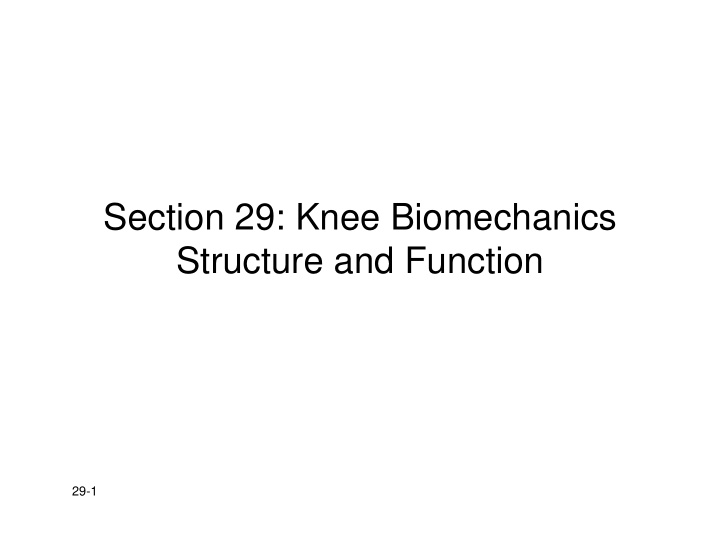



Section 29: Knee Biomechanics Structure and Function 29-1
Femur Articular capsule Posterior cruciate cruciate ligament Lateral meniscus Anterior cruciate ligament Tibia A t Anterior View of Anterior View of A t i i Vi Vi f f Right Knee Right Knee 29-2 From: Garner
From: Iatridis 29-3
From: Peeler 29-4
Quick Facts Quick Facts • Patellofemoral Joint • PFJ Loading g (PFJ) • Walking • Variations in PFJ loading – 0.3 x body weight d during OKC (open kinetic i OKC ( ki ti • Ascending Stairs chain) and CKC (closed – 2.5 x body weight kinetic chain) activities • Descending Stairs • Descending Stairs • PFJ loading increases: – 3.5 x body weight – with increased flexion in • Squatting CKC CKC – 7 x body weight – with increased extension in OKC 29-5 From: Scifers
Movements at Joint 3 planes of motion 3 l f i • Sagittal plane (flex – ext) g p ( ) – 0° to 140° of flexion – Largest range – Most important to movement p • Transverse plane (int – ext rotation) – ROM influenced by position of the joint in the sagittal plane – Ext. – almost no ROM Ext almost no ROM – Max at 90° of knee flexion (45° of ext / 30° of into rotation) – Beyond 90° of knee flexion rotation decreases because of soft tissue approximation tissue approximation • Frontal plane (abd – adduction) – None with knee in full ext. – Increases as knee moves to 30° of flexion I k t 30° f fl i 29-6 From: Peeler
From: Iatridis 29-7
From: Peeler 29-8
From: Iatridis 29-9
From: Iatridis 29-10
From: Peeler 29-11
From: Iatridis 29-12
Recommend
More recommend